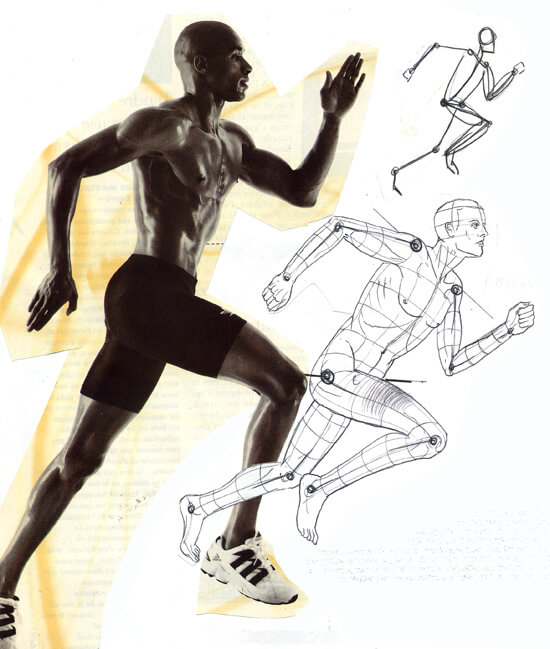This website uses cookies so that we can provide you with the best user experience possible. Cookie information is stored in your browser and performs functions such as recognising you when you return to our website and helping our team to understand which sections of the website you find most interesting and useful.

Why is good movement execution so important while exercising?




Muscular strengthening, through physical activity, is essential for the harmonious development, health, performance, and coherent and progressive aging of the individual.
“Machine: use them, and you’ll lose them; organisms: use them, or you’ll lose them” N.N. Taleb
However, it is crucial to master the correct execution of the movements linked to one’s sporting practice.
When an exercise is badly carried out, the targeted solicitation for its execution becomes imprecise, causing a loss of efficiency and maybe the cause of greater stress in the muscles, tendons, and joints, which in the more or less long term may, unfortunately, lead to the appearance of injuries, which will condition the cessation of sporting practice.
When done properly, it will then allow the athlete to use the muscle groups targeted by the exercise, to train healthily while avoiding the risk of injury during your fitness training, and to progress in order to reach his training goals.
To master the execution of a correct movement, a fitness coach will be indispensable in order to know the technical constraints linked to the movement and to make the athlete aware of the sensations of mastering the correct form of the exercise.
A movement is a complex event, involving many factors all working together to be effective. The difficulty of functional training is to exercise correct movements, not to train the muscles.
What is the complete process of a movement during fitness training?
At the center of the process is breathing. It is essential because we must supply our body with oxygen and for this, it is essential to know how to control the correct breathing mechanics of the exercises.
The control and mastery of the position and placement of the body (proprioception, posture, stability of the core) are essential. It is a base in itself but also a guiding thread, which will give access to controlled, fluid, and safe movement, for a healthy sports practice and athlete’s progression.
Posture and stability, the bases for movement.
The basis for mastering the correct execution of a movement is the stable maintenance of the posture during its execution.
Posture is the permanent activation of certain muscles (deep muscles, stabilizers) that allows us to organize our balance, both in a “still” position and in movement. It is a support, whose permanent contraction allows us to fight against gravity, to stand without collapsing like a doll (see blog post on posture).
The position of the eyes and the head is fundamental for maintaining the posture when working out muscular strengthening movements. Looking to the “wrong” place often leads to wrong placement, especially when the core is supposed to be in an upright position (“straight back” in a squat for example).
If you are training alone, it may be useful at the beginning, when you are learning movements (such as squat for example), to film yourself and place a small load on the top of your head, such as a small bag of rice, or a book for example. If it falls off, you will know that you have not kept your back straight and will have to correct your posture.
Injuries and pain due to training
Our body has been built in a logical and intelligent way, in relation to the use we have of it on earth; the orientation of our bones, the tissues supporting them and the arrangement of our muscular system respond to our logic of functioning.
If our body is able to organize its posture and function according to its logic of functioning, without creating imbalances, then it does not feel pain (as long as it is not subjected to external stress).
This means that, if pain appears during (or after) the execution of a movement, our body sends us an alarm signal that the modalities of the movement performed do not respond to its functional logic. It is therefore essential to listen to your body and its sensations and to stop the exercise if the pain is felt.
If the exercise is continued, the body can continue to function by carrying out a movement that is not coherent (the brain « runs away » from the pain), and the athlete then subjects his or her body to compensations which, in the more or less long term, will not be without consequences, causing muscular imbalances and injuries.
To master the execution of a correct movement, a coach will be indispensable in order to know the technical constraints linked to the movement and to make the athlete aware of the sensations of mastering the correct form of the exercise.
If you have any questions, feel free to get in touch, I will be happy to help.
Reference:
« Posture et gainage » — Olivier Paully — Sciences et pratiques du sport, De Boeck
« Posture et musculation » — Olivier Paully — Sciences et pratiques du sport, De Boeck
« Athletic developpement, the art and science of functional sports comnditionning, Human Kinetics » — Vern Gambetta
« Movements that matters » — Paulo check — CHEK Institute Publication
